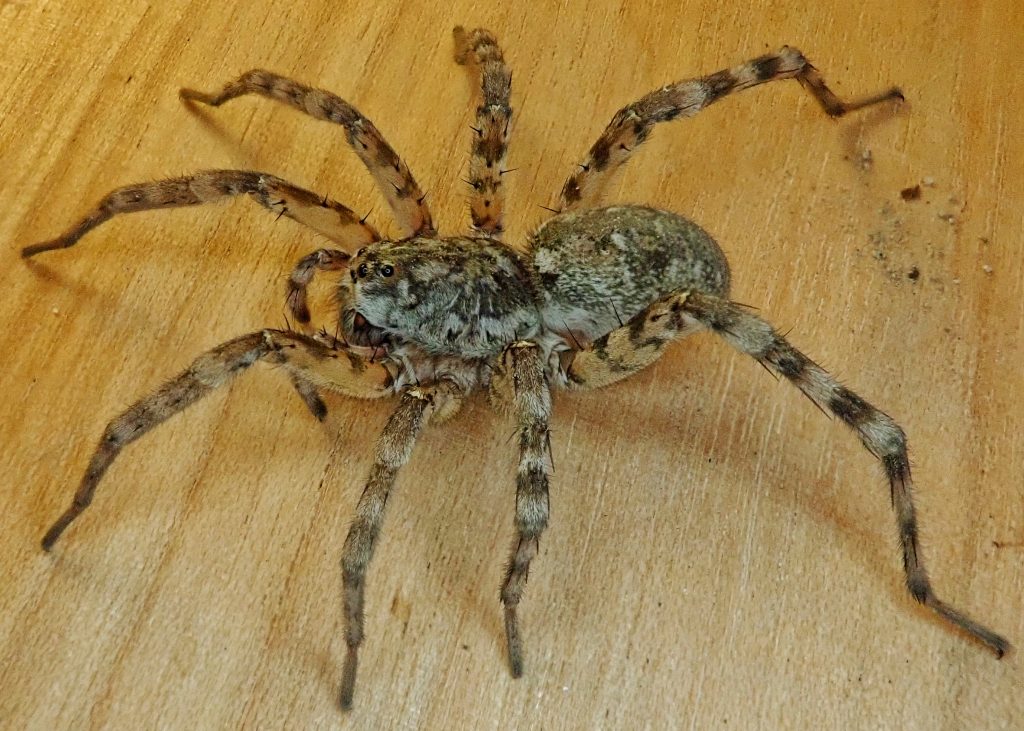
Arctosa littoralis is one of the largest wolf spiders (Lycosidae) in our region, and another seemingly common species that has not been represented from Oregon or Washington on BugGuide, although it will be when they confirm my submission.
During my research I found an in depth paper about this species by Fred Punzo (2006; a very interesting read if one wishes to know more about the life history and courtship behavior of this species) and in it he talks about males building sperm webs. I am embarrassed to admit that I didn’t know what this was. I knew that males loaded sperm into the genital bulb on the end of their pedipalp, but I had assumed they did this via some contortionist yoga, reaching around to the bottom of their abdomen to secure the little swimmers. But it turns out that they build a sperm web, a crosshatched structure with multiple layers, upon which to deposit a drop of semen, which they then, after a complex series of palpal web thrummings that may make the droplet coalesce, draw into the bulb. Add to this the fact that the male stands a fair chance of being eaten by a prospective mate, and it’s a wonder they don’t just grab a beer, turn on the game, and give up on sex altogether.
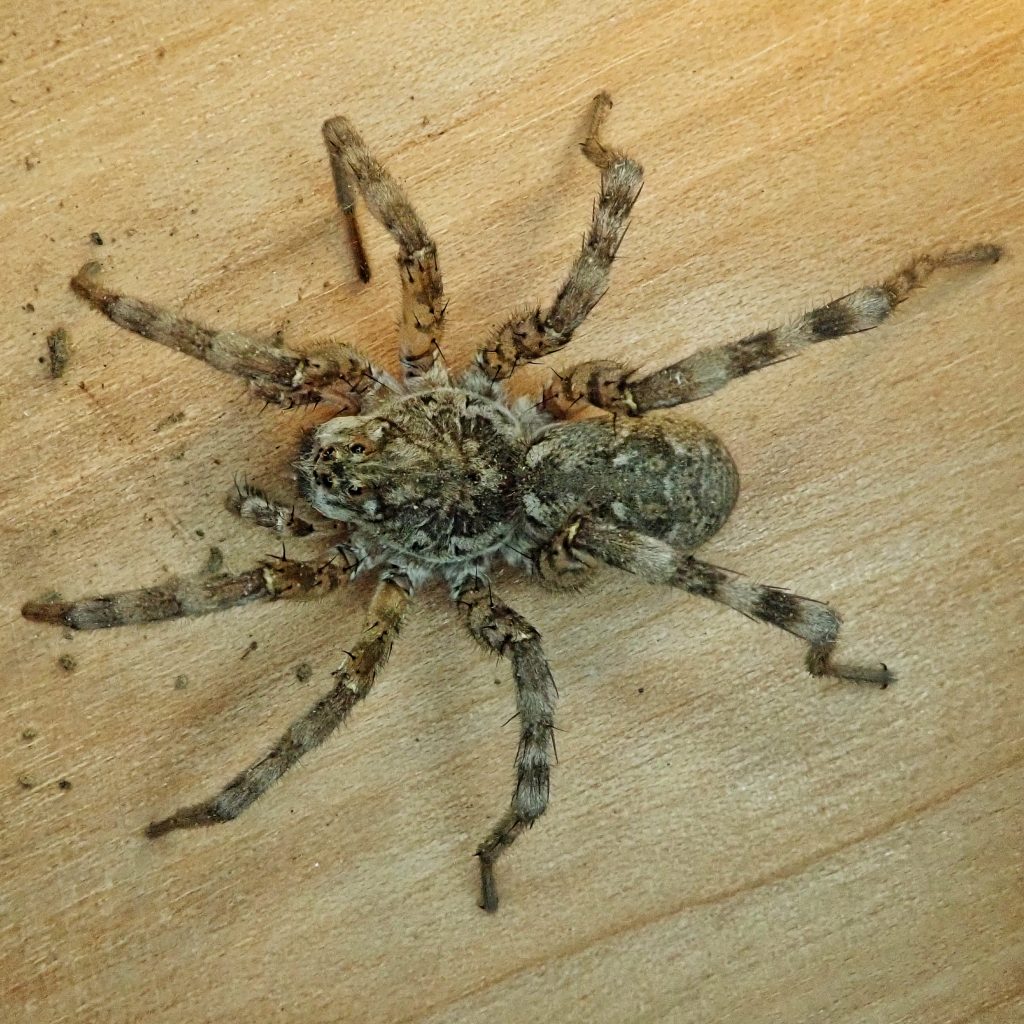
Unlike most wolf spiders which carry their egg sac with them, females of this species attend to their eggs under rocks and other cover. But the newly hatched spiderlings still ride on their mother’s back until their first moult, usually 11-14 days.
This species is both diurnal and nocturnal, unusual but not rare in various Lycosidae genera.
Immature Arctosa littoralis are primarily found in more humid microhabitats, i.e. under leaf litter, logs, boards, and rocks, but adults may be found anywhere, even in direct sunlight.
Description– Large (up to 15mm body length), mottled sand or clay colored, without a well defined, light colored, center thoracic stripe, with light spots on the abdomen and banded legs; the most distinctive characteristic is their eye arrangement, with a typical wolf spider grouping of posterior lateral eyes large and set well back from the even larger posterior median eyes, and a row of smaller anterior eyes. However in this species the anterior median eyes are almost twice as large as the anterior lateral eyes.
Similar species– The eye arrangement is diagnostic in our region, but sometimes hard to see. Other large Lycosidae are either uniformly colored rather than mottled, or have a light stripe on the thorax. The other large species in this genus, A. alpigena, has a long, narrow, orange triangle on its abdomen.
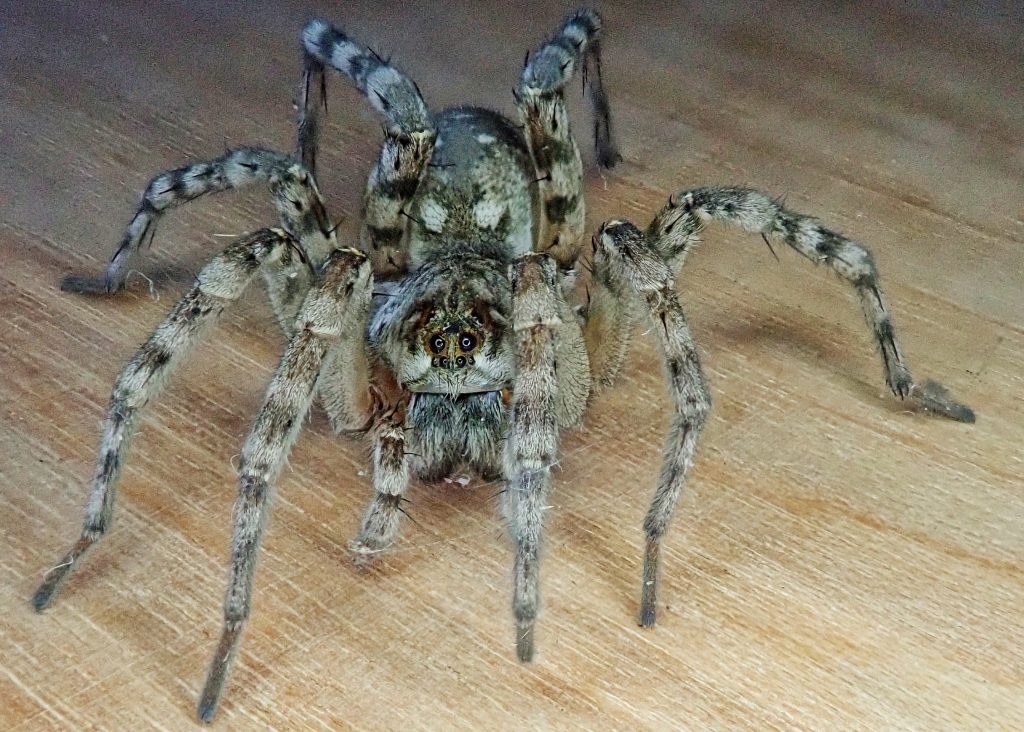
Habitat– Sandy or rocky areas near watercourses.
Range– Not much is known for sure, but probably region wide.
Eats-The list of insect, spiders, and other invertebrates that they are known to prey upon is extensive, and shows no preference for any species, or even any order. They appear to be opportunistic predators, although they are known to avoid invertebrates with chemical defenses, such as millipedes and bombardier beetles, and most Hymenoptera.
Eaten by– Adults are parasitized by various spider wasp, who paralyze them and lay eggs inside their inert form. And any insectivorous bird or small mammal is happy to consume these large meals.
Adults active– February to November
Etymology of names– Like many generic names for wolf spiders this one was make to rhyme with Lycosidae, with a prefix denoting another predatory animal, in this case Arcto, which is Greek for bear. And littoralis is Latin for ‘of the seashore’, due to this species preference for living along the shoreline.
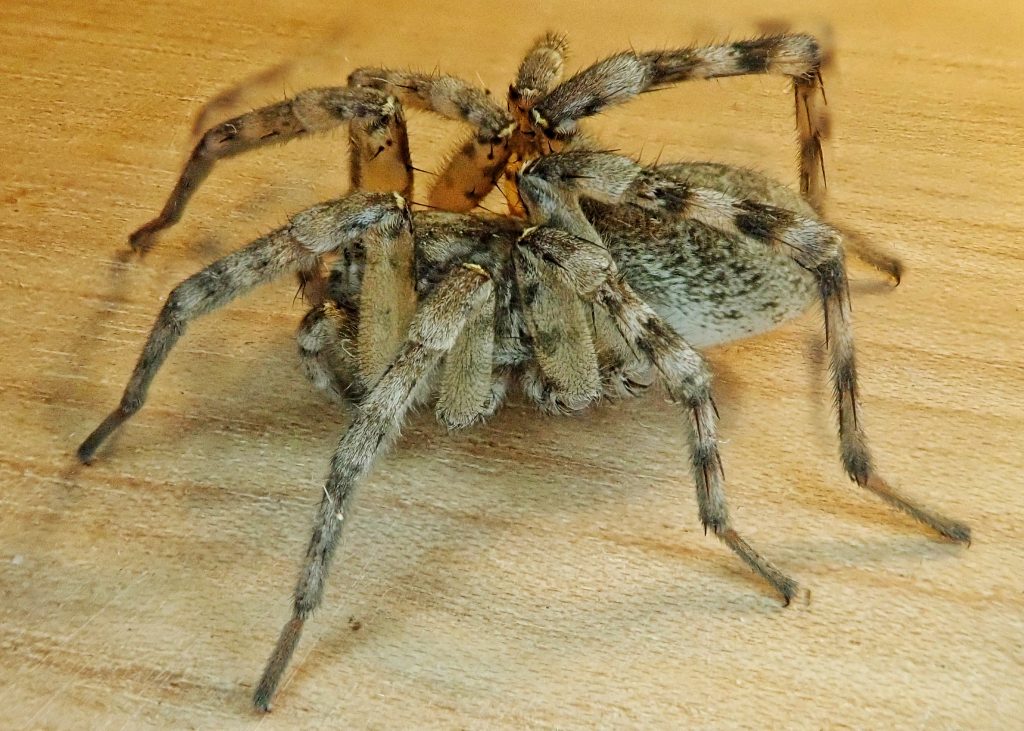
http://bugeric.blogspot.com/2012/06/spider-sunday-beach-wolf-spider.html?m=1
https://www.jstor.org/stable/24322345
https://bugguide.net/node/view/91594
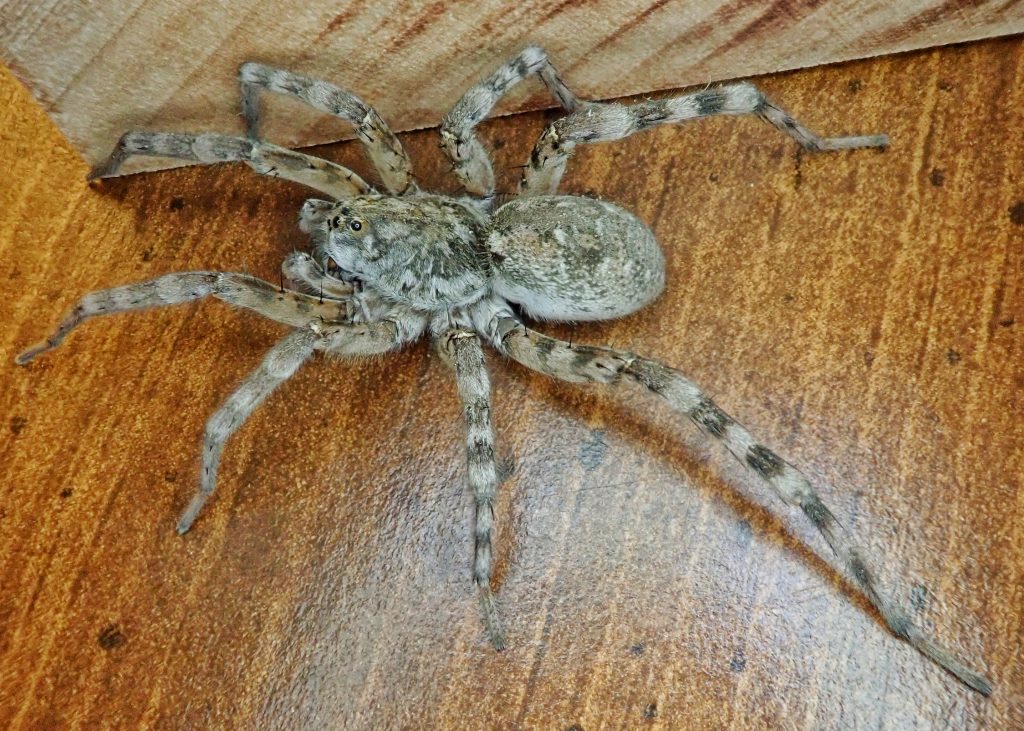
Once again, the incredible inventiveness of nature! I have to add – do you really know of any male who ‘gave up on sex’ – with a prime example being the ridiculous behavior of Rudy Guiliani in the Borat movie 🙂
🤣😂😏😉
Thank you for your very interesting & detailed profile! ☺️
Glad you liked it!